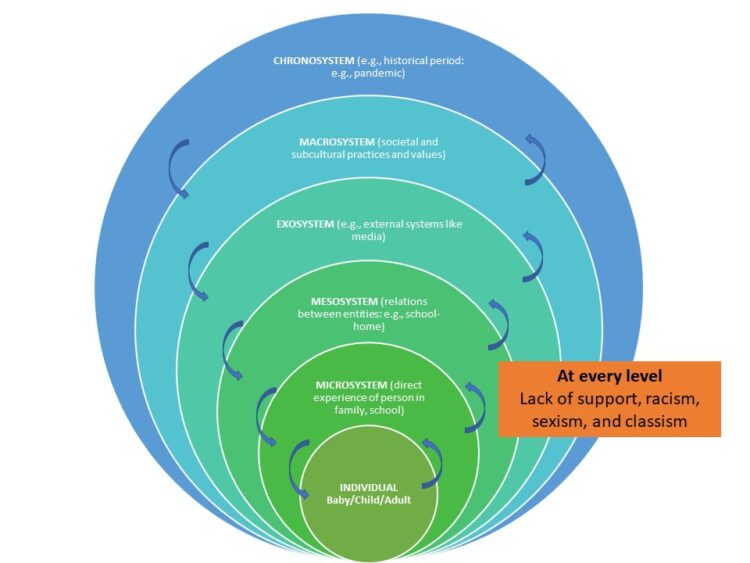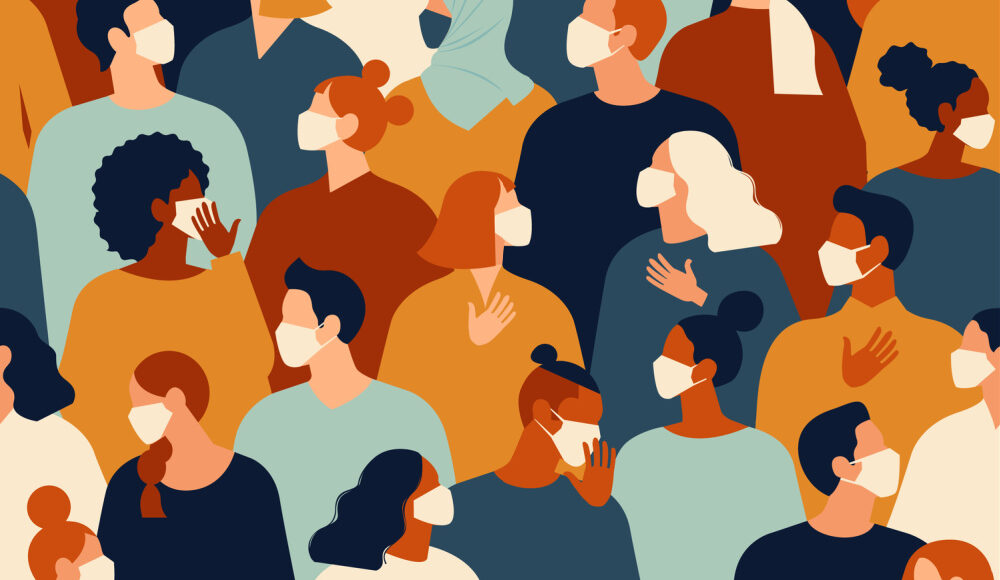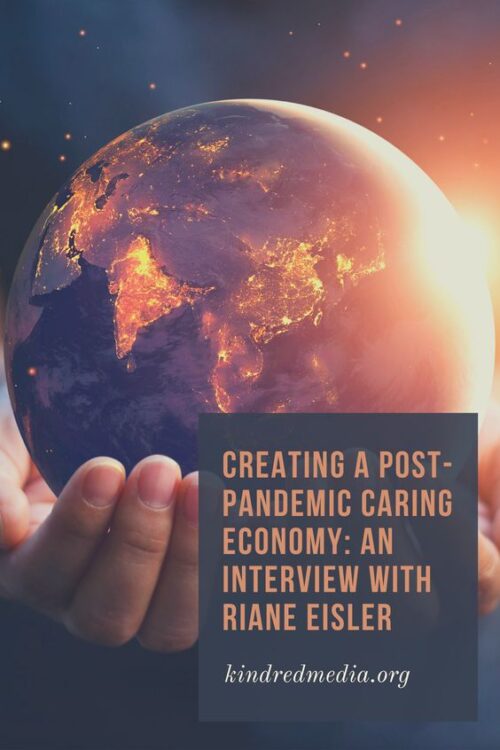The Layers Of Structures That Support Individuals, Families – And How The Pandemic Changed Them

Source: Darcia Narvaez
What supports has the pandemic damaged and what can we do?
What are you feeling today? Despair, fear, anxiety, panic, confusion, helplessness, loneliness, anger? Many of us feel like we are going to burst, sometimes even without the long-lasting physical distancing from a pandemic.
In today’s world, we often feel disconnected from community and from nature, from the world. In an individualistic society like the USA, it is sometimes hard to realize that disconnection is contrary to the evolution of our species. We evolved to develop well when supported within a network of connections. Here is an “ecological systems theory” that helps explain why we are all so miserable, and suggestions for what we can do.
Ecological System of Supports
Urie Bronfenbrenner, a Russian émigré and celebrated developmental psychologist, noticing the comparatively degraded community of supports in the USA (Bronfenbrenner, 1972), conducted various studies. He then constructed a now famous description of the kinds of societal influences on the development of a child (Bronfenbrenner, 1979). Ideally, all levels are consistent in message and support of the child. Although he focused primarily on children, all levels affect everyone at every age.
Chronosystem
The chronosystem refers to a particular era such as a world war or depression, which influences the functioning of a culture and its people. The pandemic is just such a period.
The chronosystem (i.e., pandemic) has an overall influence on every other system. Accompanied by social unrest from economic stress, racism, misinformation, racism, and climate instability, this time period is stressful for virtually everyone.
What can we do? What else can we do apart from boosting our immune systems, getting vaccinated and staying physically distant? We can acknowledge the modern world’s role in creating the context for pandemics (e.g.,deforestation) and reverse practices so that more do not occur.
Macrosystem
The macrosystem (society, larger cultural and subgroup practices and values) influences behavior generally, as when an immigrant learns the values and behaviors of the new culture. Cultures and subcultures emphasize different aspects of life, for example, musical or sport skill.
During the pandemic, the cultural values and practices emphasizing independence, do-it-yourself child raising, and pulling yourself up by your bootstraps have put many in a bind. The strain on families, especially mothers who are trying to keep the pieces of their lives together, is overwhelming.
What can we do? We can shift our understanding of citizenship and community toward mutual support instead of benevolent neglect.
Exosystem
The exosystem represents institutions that are not directly experienced by the developing person (e.g., parent workplace and social networks) but indirectly affect wellbeing. Television (and now the internet and social media) are part of the exosystem because they originate outside the home. Bronfenbrenner wrote about television in the 1970s (when television showed much less violence than today):
“Like the sorcerer of old, the television set casts its magic spell, freezing speech and action and turning the living into silent statues so long as the enchantment lasts. The primary danger of the television screen lies not so much in the behavior it produces as the behavior it prevents—the talks, the games, the family festivities and arguments through which much of the child’s learning takes place and his character is formed” (Bronfenbrenner, 1979, p. 242).
The pandemic has enhanced the time spent online, enhancing the influence of screens for learning and entertainment.
What can we do? Ideally, the children can be sent outside to explore a complex natural world, the original exosystem for our species and a deep learning experience itself. If this cannot be done without additional stress, people can try EcoAttachment Dance, 28 days of activities to build nature connection.
Mesosystem
The mesosystem represents the interrelations of values and experiences between two or more settings in which the child actively spends time: home, day care center, school, church/temple. The child moves from setting to setting in “ecological transition” (Bronfenbrenner, 1979, p. 210). Ideally, the settings share knowledge, communications, through third parties. The more linkages between settings the better. Child development is enhanced by a greater number of different (e.g., with people from different backgrounds) dyadic experiences the child has in each setting. Dyadic experiences with the same person across settings enhances child development.
Adult wellbeing is also affected by the mesosystem. Parents are influenced by how, for example, nurses or teachers, reach out to them with educational and support, drawing them into a network of connection. Working parents benefit from flexible job schedules and satisfactory childcare arrangements. Bronfenbrenner’s research indicated that mothers found their jobs to be a matter of personal fulfillment.
In contrast, alienation of children and adolescents, according to Bronfenbrenner’s (1979) account are due to “a breakdown of the interconnections between the various segments of the child’s life—family, school, peer group, neighborhood, and the beckoning, or all too often indifferent or rejecting, world of work” (p. 231). He did not include social media, another source of potential alienation, since it was not in existence at the time.
Bronfenbrenner (1979) discussed the case of a retirement home closing and residents being moved. A study found that those who became depressed or denied their grief were more likely to ‘die early’ (in comparison to expected averages) than those who expressed anger or acceptance.
The pandemic has shut down setting alternatives to home such as school, sports teams, clubs, church/temple. For adults, it often also includes the in-person workplace.
What can we do? We can find creative ways to foster community good feeling, for example, by scheduling community gatherings outdoors or play days outdoors that keep us distant but connected. Or like the Danes, we can make music together—singing together online, or outside. During the pandemic, the Danish Broadcasting System arranged sing-a-longs in which a fifth of the country participated.
Microsystem
The microsystem level refers to children’s direct experiences in family, day care or school. The focus is on one setting and the experiences there—activities, relationships. For an adult, too, the microsystem refers to direct relationships.
The pandemic has shut the door on microsystems for everyone, hitting hardest parents whose children need extensive attention and who cannot be with friends, other family members, on sports teams or other activities.
What can we do? We can find ways to help those we know who are overwhelmed with multiple simultaneous responsibilities (work, homeschooling, caregiving, homemaking). Families in these tough situations can find ways to help themselves calm down and get clear headed (e.g., 28 Days of Self Calming). Stimulate the vagus nerve, a health inducing action, can be done with singing alone or together (even humming), and belly breathing (lots of YouTube videos on this), and belly laughing (figure out ways to make family members to laugh uproariously).
Individual
The individual’s development is the last piece of the puzzle: how the child’s trajectory is shaped by experience with epigenetics (shaping gene expression) playing a large role, plus many other factors that we discuss at EvolvedNest.org.
Conclusion
The wellbeing of everyone is influenced by these levels of society, no matter what age. To maintain wellbeing, we evolved to need social support, especially in early life through the evolved nest, but also throughout life. Everything we can do to promote one another’s wellbeing is a good goal for each day.
Overall, the pandemic has revealed just how inadequate supports are for families with children. What can we do? We can get more involved in politics, influencing our leaders to better support families and children, for example, by sending monthly checks to parents, providing excellent but inexpensive child care—especially in the workplace, providing paid family leave for at least year when a child is born—ideas bouncing around Washington D.C. today.
References
Bronfenbrenner, U. (1972). Two worlds of childhood: US and USSR. New York: Simon & Schuster.
Bronfenbrenner, U. (1979). The ecology of human development. Cambridge, MA: Harvard University Press.
RESOURCES
Learn more about the Evolved Nest on Kindred.
Visit the Evolved Nest website.






